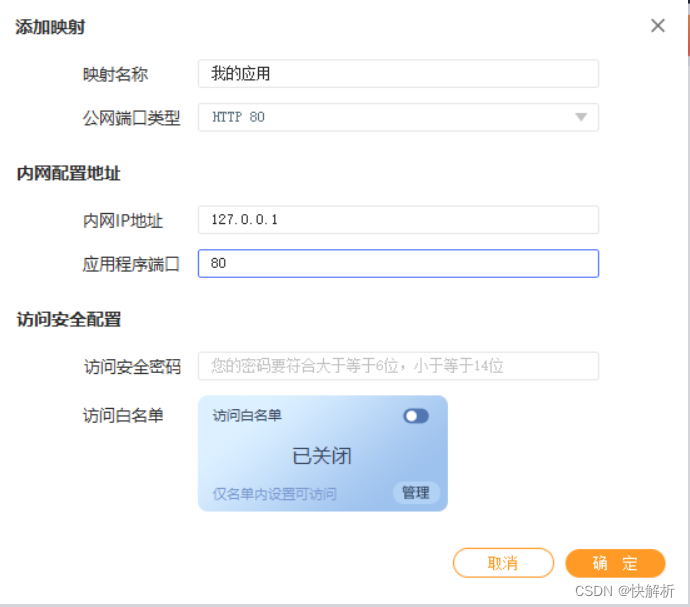After setting up the server locally and deploying the web site or other applications, it is necessary to set up the dynamic domain name service ddns , and map the internal network IP port of the host to the external network to access the internal network from the external network . Today, the editor will share with you the solution for publishing the intranet to the external network, that is, how to set up ddns dynamic domain name service to achieve external network access .
There are two common solutions for intranet publishing to the external network , one is dynamic domain name resolution , and the other is intranet penetration. Dynamic domain name resolution ddns and internal network port mapping external network , that is, internal network penetration, are two different implementation methods. They should be treated differently and used, so as not to confuse them.
When using the dynamic domain name resolution scheme to set DDNS, it needs to be implemented in conjunction with local router port mapping. When the intranet penetration , no routing settings are required. For example , the most popular port mapping software in the mainstream at present: Quick Analysis , which combines the mature P2P penetration technology principle of dynamic analysis and intranet mapping . Provide access to the Internet.
The following are the usage setting steps of dynamic domain name resolution and intranet mapping for your reference . Follow the steps to easily grasp the method of intranet services to allow normal cross-network access in different places .

Dynamic Domain Name Resolution (DDNS) Publishing External Network Method
The premise of the implementation of this method is that the public network IP is required, and it needs to be mapped on the router . First of all, it must be clear locally , check that the IP address obtained by the router WAN is the public network IP, but it can be observed that this IP will change , and then set the mapping on the router port .
1. Log in to your local public network router, similar to the internal network address of the 192.168.1.12 route .
2. Perform login management . Find the virtual server and add forwarding rules . Different routing models will have different names or names , port forwarding, port mapping, virtual forwarding, etc. After adding the route mapping, ensure that the public network IP of the current route can be accessed normally in the inter-network environment of the external network .
3. DDNS settings . If the router itself does not have its own DDNS function, or needs simpler, more convenient and better setting management, you can install and log in to Quick Resolution directly on any internal server host to add dynamic domain name resolution. When setting up a dynamic domain name, you can use your own domain name, or directly use a custom free second-level domain name automatically generated by Quick Resolution .
4. External network access with domain name . When accessing from the external network, we can connect and access through the domain name. We don’t have to worry about the problem of changing the routing public network IP , because the domain name setting set by the dynamic domain name resolution service provided by Quick Resolution is permanent and will automatically match The relationship between the bound domain name and the latest local public network IP.
Intranet Penetration Extranet Access Method
This method does not use public IP or router mapping .
1. Clear intranet access . First of all, it is necessary to make sure that the target application can be accessed normally in the LAN , and specify the internal network IP and internal network port number used.
2. Add intranet mapping . Install and log in to Quick Resolution to add port mapping locally on the intranet server or on another host in the LAN . Here , you can change the internal network address of the application to the external network address in one step .
The relevant information related to the mapping filling is as follows:

Mapping name: custom, easy to distinguish and mark.
Public port type: Refers to the port used for external network access, which is selected according to the application requirements of your own scenario.
Intranet address: Intranet access fixed address. It can be a fixed intranet IP or a computer name. If the mapping is used locally on the server, it is recommended to fill in the 127.0.0.1 format.
Application port: subject to actual conditions, do not fill in randomly.
Click OK, and an external network access address will be generated.
3. Realize external network domain name access . After the intranet fast resolution port mapping domain name takes effect, it can be accessed through the domain name and external network port in any Internet environment.